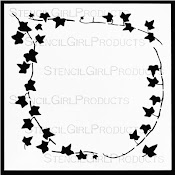StencilGirl Talk: Mary Beth Shaw's VLOG: March 2022
-
StencilGirl Talk: Mary Beth Shaw's VLOG: March 2022: Join Mary Beth in
Amsterdam and Paris! Click here for more information and registration!
Monday, October 28, 2019
Friday, October 25, 2019
Tuesday, October 22, 2019
Friday, October 18, 2019
Thursday, October 17, 2019
Wednesday, October 16, 2019
Subscribe to:
Comments (Atom)




















































































